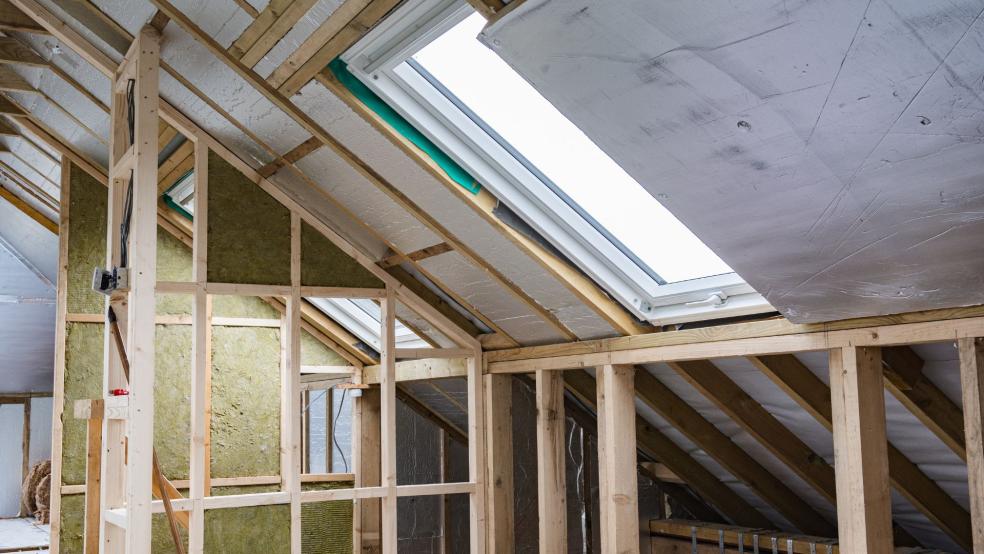
Transforming Rural Barns Into Homes by Emily Grapes, Senior Planner, Carter Jonas
Too many planning applications follow the same frustrating path of being recommended for approval, but when considered by a planning committee, it is knocked off-course by a local ward councillor eager to please local residents and subsequently is voted down. A classic case of a policy-compliant proposal being defeated by NIMBYism.
And so, it’s a cause for celebration when the reverse occurs: when local residents together with the ward councillor, go out of their way to express enthusiasm for a scheme and in doing so gain unanimous support from a planning committee.
Emily Grapes, Planner in Carter Jonas’ Cambridge office achieved exactly this when submitting a planning application on behalf of a local farmer and landowner for the conversion of vacant agricultural barns into seven new homes in the Cambridgeshire village of Horningsea.
Adding to her success was the fact that the site lies within the Horningsea Conservation Area and is adjacent to the Green Belt and open countryside. The manor house, gardens of which adjoin the site, is Grade II listed, deeming the site ‘curtilage listed’. Furthermore, under Policy S/11 of the South Cambridgeshire Local Plan, residential development in Horningsea is restricted to just two units.
Notwithstanding these restrictions, the proposals, which had been drawn up together with Carter Jonas’ Rural team led by Tim Jones, were to convert a group of redundant farm buildings into seven houses.
Emily describes the unusual path to success: “Initially the planning application for the 0.49 hectare site was recommended for refusal by the South Cambridgeshire Council’s planning officers.
“However, right from the start the conservation officer was very supportive. The local ward councillor also wanted the development to go ahead, seeing that it could help revitalise a central but derelict part of the village. He requested that the application be determined at planning committee rather than delegated to officers. The ward councillor and local residents’ enthusiasm for the scheme was expressed at South Cambridgeshire planning committee and the parish council also gave its support. As a result, the recommendation for refusal was overturned and the committee voted unanimously in favour.”
So why did this scheme defy norms and achieve such success? “A major factor was design,” says Emily. “The agricultural buildings were originally built in the 1880s and retained some detailed design features in the brickwork and windows. Also, the plans sought to largely retain the buildings’ existing footprint rather than exceed it. These factors were critical to the conversation officer, who unusually, required only minor amendments, and to the Council recognising the scheme’s positive approach to heritage preservation and design, which they stated were, ‘of a sympathetic design which was felt to be appropriate to the nature of the village and would enhance its designated heritage assets’.”
To gain such support in the face of a local plan policy which restricts residential development to just two units – a quarter of what the planning application achieved – was a separate feat and perhaps an even greater achievement.
Emily explains, “Within the local plan there are stipulated levels of development hierarchies, with infill villages categorised as the lowest level in terms of quantum of development – which Horningsea is classified as despite being only approximately four miles northeast of Cambridge.
“The factor which worked against us was the brownfield issue. The definition of brownfield in the NPPF is ‘land which is or was occupied by a permanent structure, including the curtilage of the developed land…and any associated fixed surface infrastructure’, but that ‘This excludes land that is or was last occupied by agricultural or forestry buildings.’ So although the site had all the characteristics of brownfield land it was technically exempt from the policies that enable development on brownfield land due to its former agricultural status.”
Under Policy S/11 (‘Infill villages’) of the Local Plan this permits, ‘In very exceptional circumstances a slightly larger development (not more than about 8 dwellings) where this would lead to the sustainable recycling of a brownfield site bringing positive overall benefit to the village’.
Essentially the fact that the land couldn’t be classified as brownfield was the reason why the principle of development hadn’t been supported by planning officers, despite its advantageous village location and status as a disused former employment site. But for the members, in the slightly different position of being able to assess the overall planning balance by stepping back from policy adherence and prioritising the benefits of the scheme in relation to the specific location, it was deemed suitable.”
It is rare for councillors to overturn recommendations for refusal based on their own local plan. When it does occur, it is a real triumph – for the developer, the planning and design team, future residents and, in this case, for common sense.
Colin Brown, Head of Planning & Development, Carter Jonas adds a final comment: “With a local and national housing crisis worsening by the day, good quality conversions such as that proposed here should not be passed by lightly. While this example highlighted contradictions in local planning policies, I very much hope that planning officers will have regard to it in securing the optimal use of redundant agricultural buildings in the future.”
The Horningsea barn conversions are a triumph not just for Carter Jonas’ Planning & Development team but also for its Rural division which oversees the estate management and its Residential division which will market the completed properties when they are complete in spring next year.









